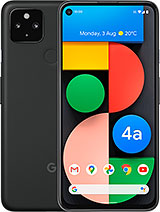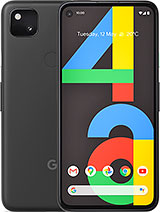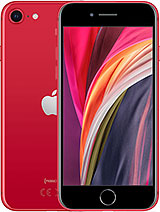Pixel 4a vs. iPhone SE camera comparison By CNET
The Pixel 4a has a few camera tricks up its sleeve to take on the iPhone SE. Let's see how the cameras compare on two of the biggest budget phones. Both of these phones have a single rear camera, but the Pixel 4a costs 50 less than the iPhone SE in the US. So let's see some photos and videos first, and then we'll come back and talk about the differences in camera hardware. I took a lot of landscapes for this comparison and I have to say I was expecting there to be a bigger difference between the two phones but, as you can see, for many of these photos, they're really hard to tell apart the iPhone's colors are a tiny bit more saturated on some outdoor photos in bright, sunlight on this scene with the windmill. The photos are so similar.
But to me, it looks like the iPhone has a tiny bit more contrast, and if you push in a little, it's still hard to tell the difference, but the pixel is overall a little sharper on the windmill itself, but more noisy in the shadow areas like here on the tree. For this shot of the flower mural, I can hardly see any difference at all unless I'm really nitpicking. The pixel is maybe a third of a stop underexposed if that compared to the iPhone, both phones do a perfect job of evening out the shadow and highlight detail in their HDR modes. So nothing looks blown out, but I think the pixel takes a slight edge here, as the effect looks a bit more pleasing. The pixel also has the option to adjust the HDR by tapping on the image when you're in the regular camera mode and then adjusting these sliders for the highlight and shadow details, so you can tweak it as you like, and then snap the image, but it does take longer to render the HDR effect on the pixel than it does on the iPhone, which is almost instantaneous for this food shot with natural diffused lighting.
The biggest difference I can see is the saturation level, so the iPhone looks a bit more vibrant, like we've seen in some other shots. When you push in a bit closer to look at the detail, I cannot separate them. Moving to portrait mode on the rear camera, the pixel pushes in quite a bit, so you have to take a few steps back to get the same wide view as the iPhone or take a few steps in with the iPhone to get the same view as the pixel. But if you do that, facial features can look a bit more distorted for a shot without too much going on. In the background, edge detection works pretty well on both, and I think the blur looks natural with more of a busy background.
The phones start to struggle to get the blur right, but overall, to my eye, the pixel just takes this one because of a smoother transition between the subject and the background. The white balance is a little more true to life on the pixel, but the iPhone's colors look punchy and vibrant on the iPhone. You can also adjust the virtual aperture before or after taking the photo, whereas on the pixel, you can only adjust after the fact, and you can also add, different lighting effects on the iPhone like studio or stage lighting, to enhance the shot. But the iPhone can't take portrait mode photos of anything other than people. So if you try to snap flowers or any other object, it will just say no person detected on the screen.
The pixel, on the other hand, takes portrait mode photos of pretty much anything for the front camera. The pixel's lens has a wider field of view, so I found that my facial features looked a little distorted for selfies, and it's a fixed focus lens. So sometimes, if you don't get the angle or the distance between you and the lens just right, you can end up being a bit soft and out of focus like all these photos. It's about personal preference, so I prefer how I look on the iPhone compared to the pixel, which has a bit more contrast overall, thanks to their single lens. Neither of these phones have optical zoom, but the pixel has super resumed that merges frames together to create a more detailed image.
The iPhone, though, has plain old digital zoom, so here's a shot from both of the phones at two times, and here is one at five times, which is the maximum reach of the iPhone. It's actually not too bad on either of them. But I would say the pixel definitely takes the edge on detail, and you can push out all the way to seven times on the pixel but yeah. It does not look great when you get that close. The pixel has always excelled at low light, photography, and it's safe to say.
The 4a continues that tradition night mode on the default camera app means that low light shots, look clearer and brighter than those on the iPhone SE, which doesn't have a night mode on the default camera. Just take a look at the difference that it makes in these shots it's really night and day. The 4a also has an macrophotography mode, just like the original pixel 4. Now this is one of those features that I really don't find myself using much at all, but I love that it's there and when you do use it, it produces some really nice. Looking photos now, we've seen what each of the phones can do for photos.
Let's talk video now both shoot at 4k, but the iPhone goes to 60 frames a second while the pixel is at 30. And while it might not make a huge difference on paper in practice, I think the iPhone looks better. The image is a bit sharper overall and colors are more true to life compared to the pixel. I also found the iPhone shifts exposure more fluidly, so there wasn't a huge jump when I was going between light and dark areas. The stabilization on both phones is pretty good, but I do think the iPhone displays slightly less of that jello effect, which is often the result of electronic image.
Stabilization like used on the pixel okay. Now it's time for some video from the front-facing cameras on the SE and the Pixel 4a, I'm holding them about the same length from my face. The Pixel 4a does crop in a little more onto the image. Just want you to take a look at how it deals with me hand, holding it and also to see the background. If anything is blown out, see how they deal with dynamic range from the front camera when it comes to video and also the audio.
So as I'm talking we'll switch back and forth between the audio tracks, so you can take a listen and see which one sounds better, and I'm also going to do a little of a walk. So you can see stabilization as I'm moving, rather than just standing still so. Holding your phone steady as you walk is a real talent and a great skill, and I admire anyone who can do it well, so just take a look and see what the stabilization looks like as I am walking and talking and as I try not to trip over the plants in the garden all right. Let's look at the camera specs. The Pixel 4a has a 12.2 megapixel rear camera at f 1.7 with optical and electronic image stabilization. The front camera is 8 megapixels at f2, and it's fixed focus.
The iPhone has a 12 megapixel rear camera at f 1.8, with optical image stabilization. While the front camera is 7 megapixels at f 2.2. Now, for some other bits and pieces about these cameras that you might value, if you want raw capture as well as JPEG you'll, get that on the pixel just go into the settings and toggle it on now, you can shoot raw on the iPhone, but you do need a third-party app and the pixel has a beauty mode to soften or retouch your skin and there's also a pretty useful electronic level that can show you if you're not holding the phone straight. Alright you've watched the video. Now you have to decide which one of these phones wins the comparison for you, so the usual disclaimers.
Of course, this all comes down to personal preference and the screen you view it on does make a difference. So I've been comparing phones for a while in terms of their cameras, and I have to say the results of this comparison for me have not really presented any surprises. Both are excellent at what they do and considering that they both cost less than four hundred dollars in the US for the base models, you're getting an incredible camera for your money. Now. That said, I think the pixel just takes the edge when it comes to still images.
Overall, I was just really pleased with the consistency of the images and especially night mode. It does a perfect job. Unfortunately, the SE does not have night mode built in. If it did, I think there would be absolutely neck and neck when it comes to still images. I do prefer the selfie and the front facing camera on the iPhone.
I think it looks a little more flattering when it comes to video, though it's the complete opposite, the images look, sharp detailed, the audio is good, and the stabilization is excellent. So if video is a priority for you, then the iPhone is a stronger performer, but, as I said, both of these phones have incredibly capable cameras, and you're really not going to be disappointed in either. Thanks for watching the comparison, let me know which phone you think won down in the comments below and stay tuned. We got lots more camera comparisons and phone comparisons. Coming your way.
Source : CNET







![[Hindi] Fix Sudden Battery Draining Issues & Improve Battery Backup | Battery Calibration](https://img.youtube.com/vi/isBFNqMWY_k/maxresdefault.jpg )



















